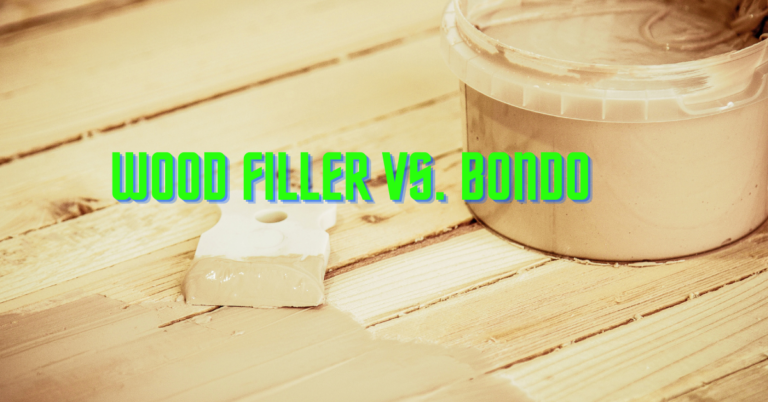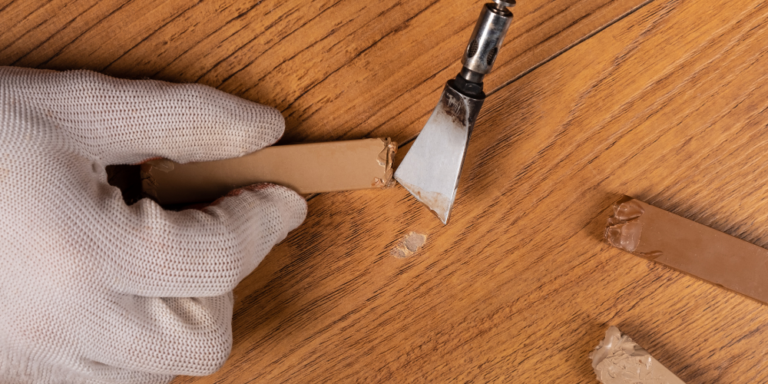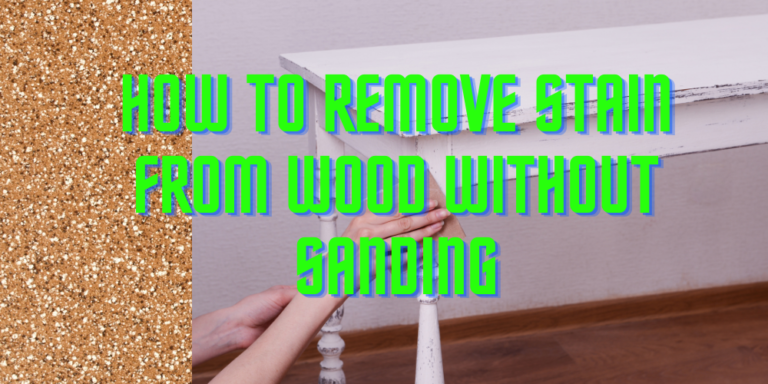How to Tell if Wood is Rotten
Wood rot is the result of a combination of water and fungal growth, which causes wood decay. Microscopic organisms that flourish in damp environments eat away the wood as they grow, and they can spread from one part of the structure to the next. Wood rot is a danger to your home’s structural integrity and value.
The way wood looks, feels, and functions and how easy it is to work with is why it is preferred. Wood, as beautiful as it is, is prone to rot. However, damaged wood, such as rotted wood, must be dealt with properly.
So, how can you know whether your wood is rotten and what should you do if it is? This article about how to tell if wood is rotten gives a detailed explanation of recognizing the signs of wood rot, how to avoid it, and more. Let’s go!
All at a Glance
Causes of Wood Rot
The following are some of the common causes of wood rot
- Weather and exposure to the elements
- Incorrect installation
- Damaged roof or siding
- Clogged gutters
- A shattered door frame or a cracked windowsill
- Keeping water in the vicinity of the foundation
- Lack of effective drainage around the house
How to tell if Wood is Rotten

Rot is one of the most common problems to look for in your wooden features, and the sooner you find it, the easier it is to fix. Here’s how to tell if your wood is rotten.
Dry and Wet Rot
Dry and wet are the two types of rot that attack wood. Wet rot is just the natural degradation of wood in the presence of high moisture levels, whereas a living fungus infection causes dry rot.
While both types of rot can be harmful, dry rot is more serious due to its rapid spread and strength. Wet rot spreads considerably more slowly than dry rot because it requires a supply of moisture to thrive. Thus it won’t move beyond damp places.
Detecting Dry Rot
Because it manifests more evident signs later in its lifespan, dry rot may be difficult to identify than wet rot. Those who are familiar with wood rot, carpentry, and deck repairs, for example, can typically detect dry rot if it exists. These are some of the signs:
- Manifestation of fruiting bodies (mushroom-like, rust-colored, pancake-shaped, porous)
- Wood with spore dust (usually red and near fruiting bodies)
- White mycelium spreads through the wood (fine, fluffy strands)
- Patches of yellow-white-greyish ”skin” overlying the wood
- The scent is damp, musty, and mushroom-like.
Detecting Wet Rot
Though wet and dry rot might seem difficult to distinguish for the untrained eye, certain distinguishing characteristics exist between these two vexing fungi. You need to focus on the color, texture, shape, size of the damage, and smell of the wood to determine wet rot. The following are some of the most typical wet rot signs:
- Texture has softened (i.e., it becomes spongy and very easy to penetrate with a pointed object)
- Appearance has darkened ( an area might appear darker than the rest)
- Warping or shrinking
- Smells musty and earthy
- Crumbles and cracks
- Restricted fungus growth
Health and Safety risks- Rotten wood
\Wood rot is also a warning sign of a variety of health and safety hazards. Suppose your wooden furnishings within or outside your home or office are beginning to deteriorate. In that case, you must repair and replace the afflicted parts to avoid putting yourself and others in danger. The following are the most serious health and safety concerns caused by rotten wood.
Concerns about the lungs
While rotten wood isn’t the source of respiratory difficulties, it does signal an abundance of moisture in the air and the growth of potentially hazardous fungi such as black mold. Mold can spread quickly in wet conditions, sending spores into the air that can cause coughing, sneezing, lung irritation, and other breathing problems if inhaled.
Rashes and Irritation
Mold can cause skin rashes, eye discomfort, headaches, and weariness if it is the source of your wood rot. Again, rotten wood isn’t the root of the problem. The fungus that causes rot results from warm, wet circumstances, which is the real danger. Nevertheless, if you come across wood rot, there is every possibility that your health will suffer.
Open spaces, Cracks, and Gaps
Wood rot can expose the interior of your home or building to exterior influences like insects, mice, and other pests, bacteria, and more. Some of these unwelcome guests may spread a variety of diseases. Therefore, it is important to keep your interior well-sealed against these forces, particularly at windows, doors, seams, and other possible entrance spots.
Structural weaknesses
Structure degradation is, by far, the most significant safety concern caused by rotten wood. Wood is a prevalent and practical construction material because it is resilient, flexible, and strong when properly maintained. Wooden building materials are used as supporting components in many homes and buildings.
However, as these wooden features deteriorate, they grow softer and weaker, making them less able to withstand weight and pressure. Its foundation may eventually fail, bringing the entire structure down with it.
How to repair a rotten wood
The majority of rotten wood is found in high moisture places such as attics, basements, door jams, decks, and fences. However, rather than investing your time and money repairing the entire structure, you may fix the rotten wood.
Remove the rotten part of the wood.
With a hammer, claw out the rotten part. To remove loose rot, use a claw hammer. Place the hammer’s claw at the base of the rot. Pull the clawback towards you while applying pressure. Remove as much as possible the soft decaying part without causing damage to the healthy wood. Do not remove with force.
Remove any leftover rotten wood using a router with a V-shaped bit.
Hold the router so that the bit is 3.2mm from the wood’s back edge. Grind away whatever rot you couldn’t reach with the hammer using short back and forth strokes. Grind the wood till it is strong and healthy, as the router will have a hard time cutting through harder wood. If rot is allowed to remain inside the wood, it may begin to rot again.
Harden the wood with a wood hardener
You can find a wood hardener at your local home improvement store. The hardener is a substance that penetrates the wood and forms a seal, preventing moisture from penetrating. Apply the wood hardener to the exposed area with a little paintbrush and let it dry.
Fill up the gaps with Filler.
Filling the wood with wood epoxy is the best option. Apply the epoxy to the areas that need to be filled with a soft brush. Before it dries, make sure you smooth it out and remove any excess epoxy. Then allow the epoxy to cure completely, preferably overnight.
Sand off paint and surface deterioration with sandpaper.
Because many patching solutions won’t attach to old paint, it’ll have to be scraped off. Remove any residue from the surface of the wood with a paint scraper or coarse sandpaper. As you work in a circular motion, apply an even amount of pressure. Before you continue, remove any dirt, rust, or priming from the wood’s surface.
Prime
If you plan on painting, you may need to prime the newly fixed area using a primer, depending on the area. Apply the primer with a paintbrush, following the primer’s instructions, and let it dry out completely.
Paint
Last but not least, paint your patchwork. Depending on the results you want, you need to apply 1-3 coats. Allow to dry completely, and you’re ready to go!
Conclusion – How to Tell if Wood is Rotten
Wood rot can sure create a variety of structural issues, including degraded support posts and beams. A rotten floor, ceiling beams, and ruined roof decking send people into a panic when discovered in their houses. Water is a requirement for establishing wood rot, making any indicators of excess moisture a concern.
Wood damage, as explained earlier, can be caused by leaking pipes, appliances, or fixtures, and if you notice signs of paint damage, it could indicate underlying wood rot. Making it very easy to tell if wood is rotten.
A softwood that has been weakened by wood rot should be replaced as soon as possible to prevent the rot from spreading. If the wood is stained but not softened by poking it with a screwdriver or any other equipment, you can consider repairing it.
You can considerably lessen the health and safety dangers mentioned above by preventing wood rot from taking place. Maintaining clear and clean gutters, installing dehumidifiers in basements and attics, investing in better insulation, and enhancing overall ventilation are all things you can do to keep moisture out of your building.
Following the above guide, you already know the causes of rotten wood and can successfully tell if wood is rotten, prevent and repair rotten wood.
Important Reads:







